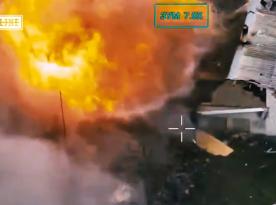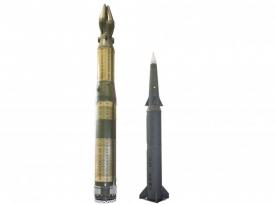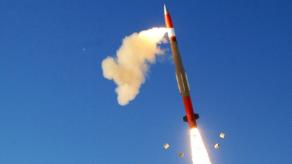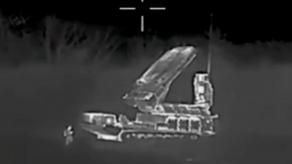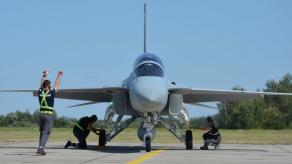Ukrainian Defense Forces actively employ unsophisticated racing drones equipped with fragmentation explosives, the so-called anti-aircraft FPV drones, for taking down aerial threats. After this technology gained momentum a little over a month ago, used primarily against relatively low-speed reconnaissance UAVs, it has downed numerous targets: a video recently published by Ukrainian activist Serhii Sternenko, shows evidence of at least 115 unmanned aerial systems struck by FPVs mid-air.
However, intercepting a speedy loitering munition is a more difficult task, though not impossible, as proven by the Samosud unit from the 11th Brigade of the National Guard of Ukraine. September 5th morning, the drone operators managed to land a hit on a Lancet munition launched by the russian invasion forces. The corresponding video was published by Sternenko, too.
Read more: Ukrainian Forces Keep Burning Down russian Troops' Positions With "Dragon Drones" (Video)
Збиття нового Ланцета за допомогою FPVВоїни 11 бригади Національної гвардії збили вашим дроном нову модифікацію Ланцета «Іздєліє-51», який літає на дистанцію 50+ км. Він хотів атакувати якийсь з наших обʼєктів, але не сьогодні, мразото, не сьогодні. Дякую за ваші донати… pic.twitter.com/FcrZcBWlG7 — Serhii Sternenko (@sternenko) September 5, 2024
Notably, it was the newest modification of Lancet, the Izdeliye 51 — instead of two equally sized X-shaped wings, it has a single wing closer to the head and smaller fins in the tail. According to the manufacturer, ZALA, this loitering munition has a 5-kilogram warhead and can fly 70 kilometers far, although practical observations by the Ukrainian side indicate an effective range of about 50 km. The russian forces use these aerial vehicles to launch deep strikes into Ukraine's rear.
Important to note, this isn't the first time Ukrainian drone operators have taken down a Lancet. This June, the Signum unit of the 93rd Mechanized Brigade shared footage of a similar achievement, the enemy Lancet was intercepted at a distance of 6 km from the frontline. At that time, it was seen rather as an exception but with the mass introduction of the anti-aircraft FPV solutions, the practice turning into a new trend is a matter of time.
А от і відео збиття ланцета https://t.co/XKoPwkquCO pic.twitter.com/K1MvPaTP1h — Serhii Sternenko (@sternenko) June 19, 2024
Besides, FPV drones are becoming a menace for russian rotorcraft aviation as well. As earlier reported by Defense Express, a russian military blogger, Fighterbomber, expressed concern that Ukrainian anti-aircraft FPV drones pose a growing threat to russian helicopter pilots. As they noted, attack helicopters of the russian army more often become targeted by FPV drones than air defense missiles nowadays. Although for now, there's only a handful of publicly known instances where Ukrainian FPV drones actually managed to successfully strike a chopper.
To increase the effectiveness of their anti-aircraft FPVs, Ukrainian engineers constantly tweak and refine both hardware and software. A few weeks ago, the the Wild Hornets FPV workshop broke the speed record by introducing a copter drone accelerating to 264 km/h (164 mph).
Read more: Ukrainian FPV Anti-Aircraft Drones Pose Growing Threat to russian Helicopter Pilots






